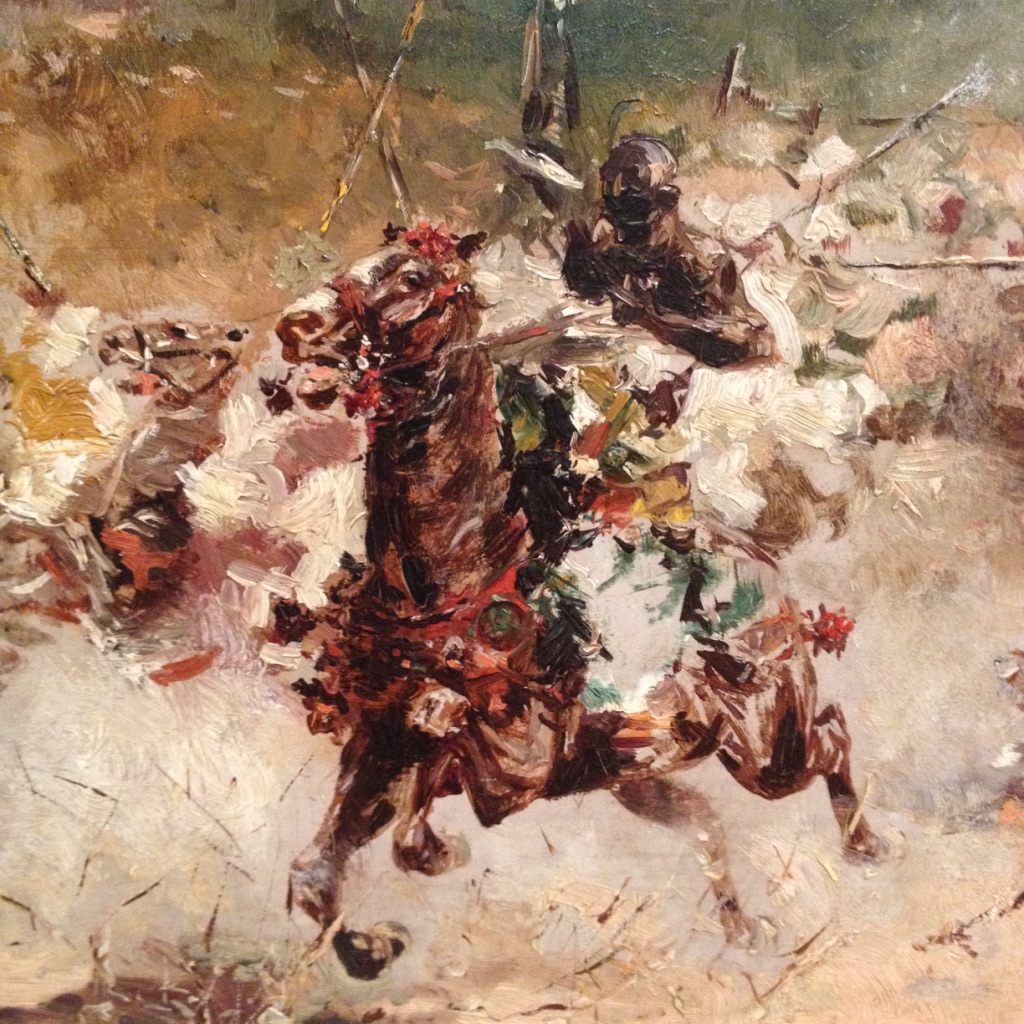I love to visit exhibitions! And I thought that it would be a great idea to start the year with a special one that I have visited recently, and that reflects the Orientalist Painting in Spain from 1860 to 1900… Among the paintings, a lot of good authors of its time, masterpieces made in watercolors and Oil or simple drawings that transport us to distant lands, and that personally impact me. Sometimes for their meticulous preciousness, specially in watercolor, and sometimes for the lightness and accuracy of their strokes in Oil… Just amazing works full of color, lights and shadow, life and imagination!!
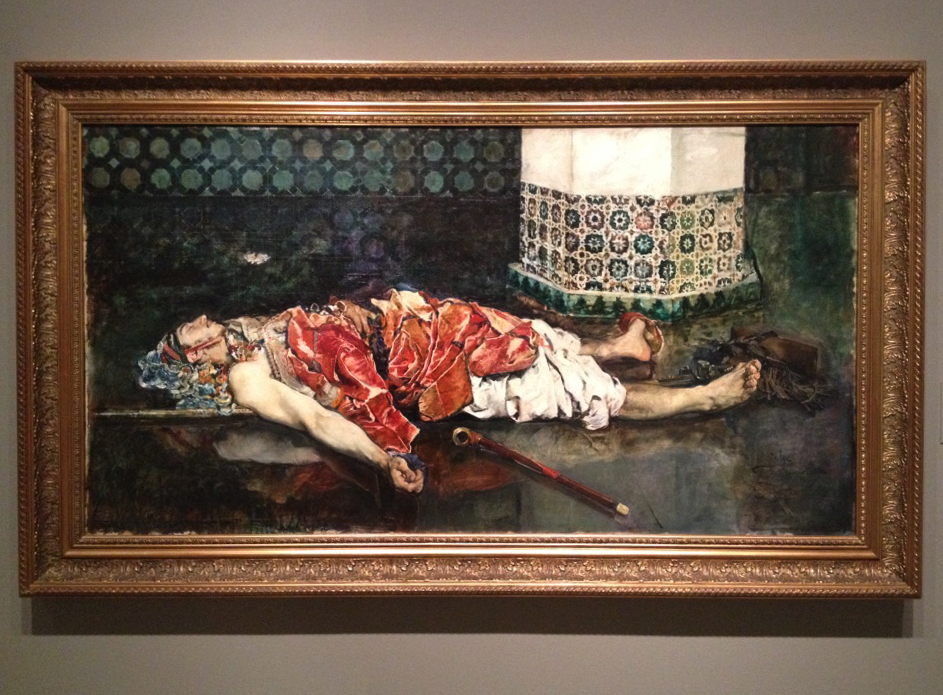
Emilio Sala Francés, “Kif smoker”, 1872, Oil on canvas, © photo by Bogra art studio, 2019-20
In its latest exhibition, curated by Francesc Quílez and Lourdes Moreno, the Museo Carmen Thyssen Málaga takes a look at Spanish painting inspired by North Africa during the second half of the 1800s through artists such as Fortuny, Tapiró, Fabrés and Lameyer, among many others, as well as their French contemporaries including Delacroix and Benjamin-Constant.
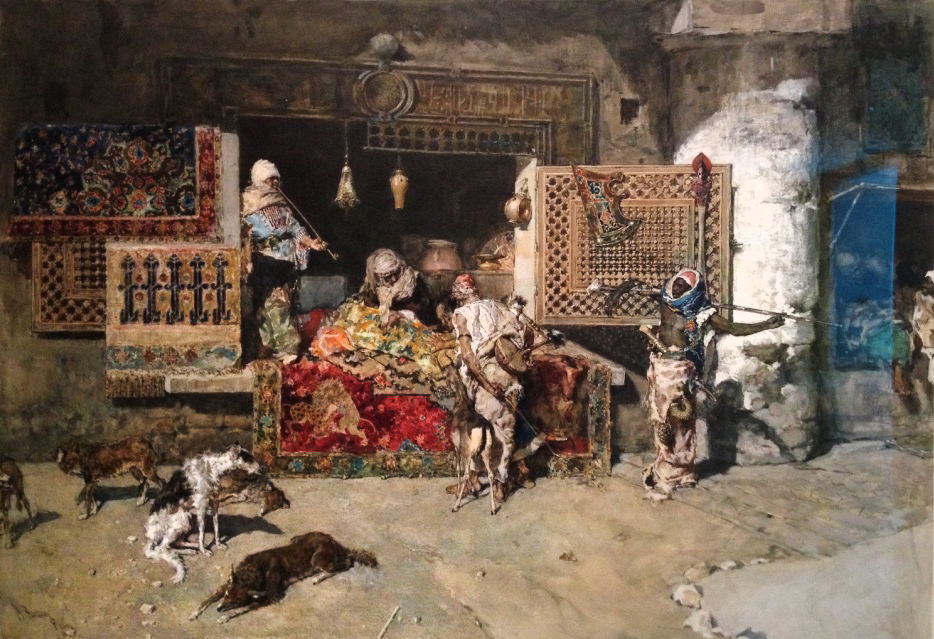
Mariano Fortuny, “The Tapestry seller”, 1870, Watercolor and White Temple. © photo by Bogra art studio, 2019-20
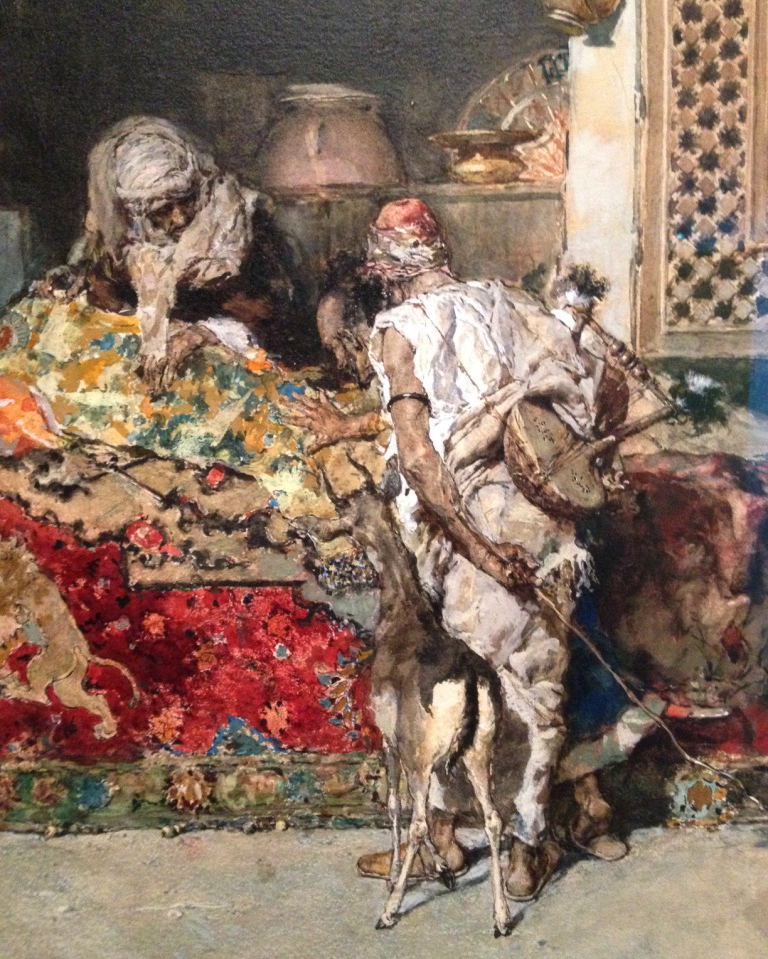
Mariano Fortuny, “The Tapestry seller”, 1870, Watercolor and White Temple. © photo by Bogra art studio, 2019-20
European colonial expansion in northern Africa in the 1800s encouraged many artists, especially French and Spanish, to travel to Morocco, Algeria and Tunisia. Their depictions of these countries´ landscapes customs, and people gave rise to what became known as Orientalist Painting.
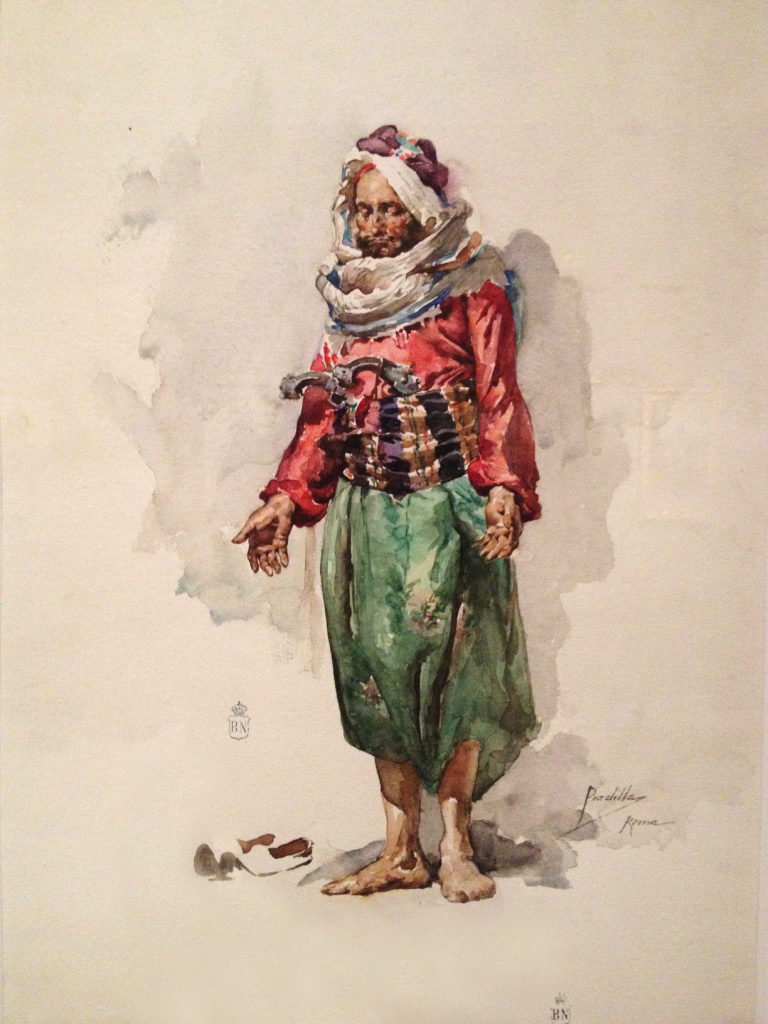
Mariano Fortuny, “The Arab´s Prayer”, 1868, Watercolor on paper © photo by Bogra 2019-20
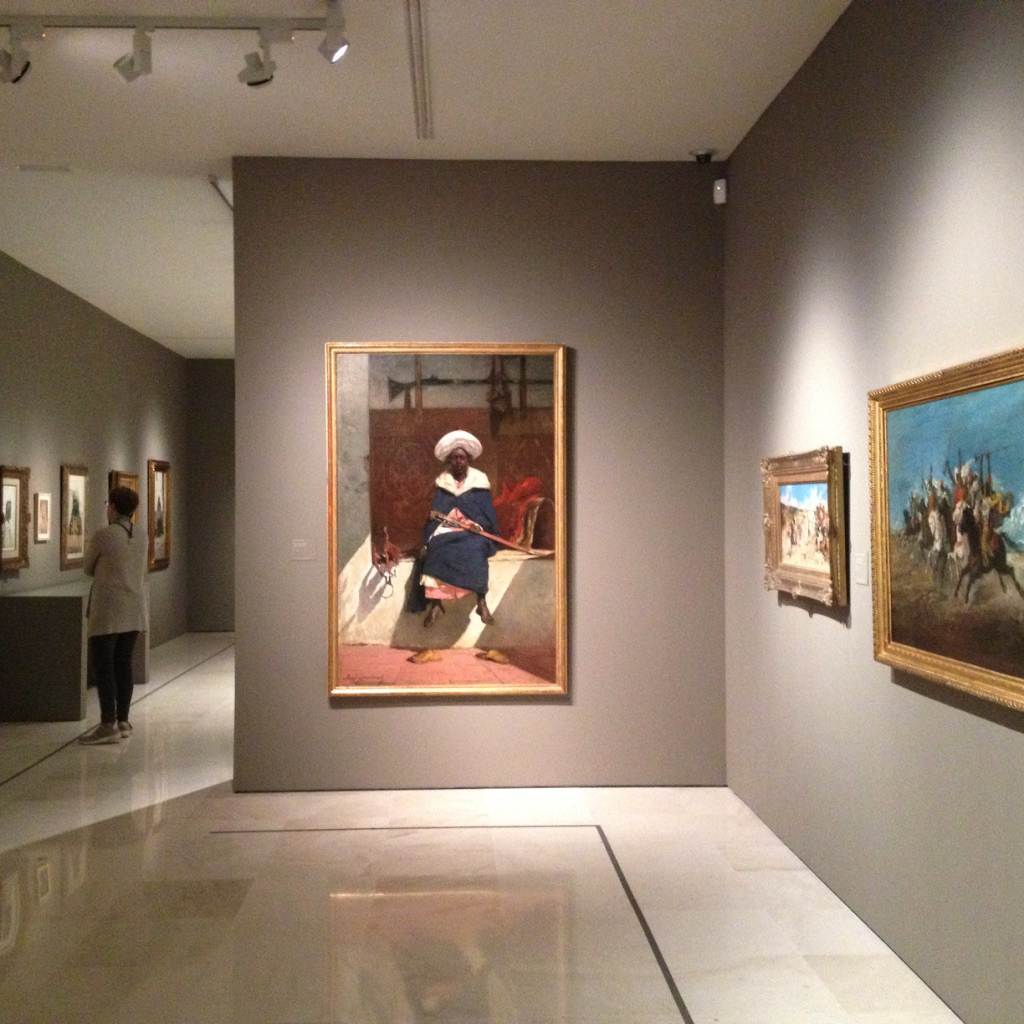
A view on the exhibition, © photo by Bogra 2019-20
The popularity travel literature enjoyed at the time, the desire for new subject matter, and an adventurous, restless spirit led many artists to flee from the modern civilization ushered in by the industrial revolution in search for an ideal, dreamed-of-paradise, which they portrayed in their works by inventing an exotic, alluring Orient.
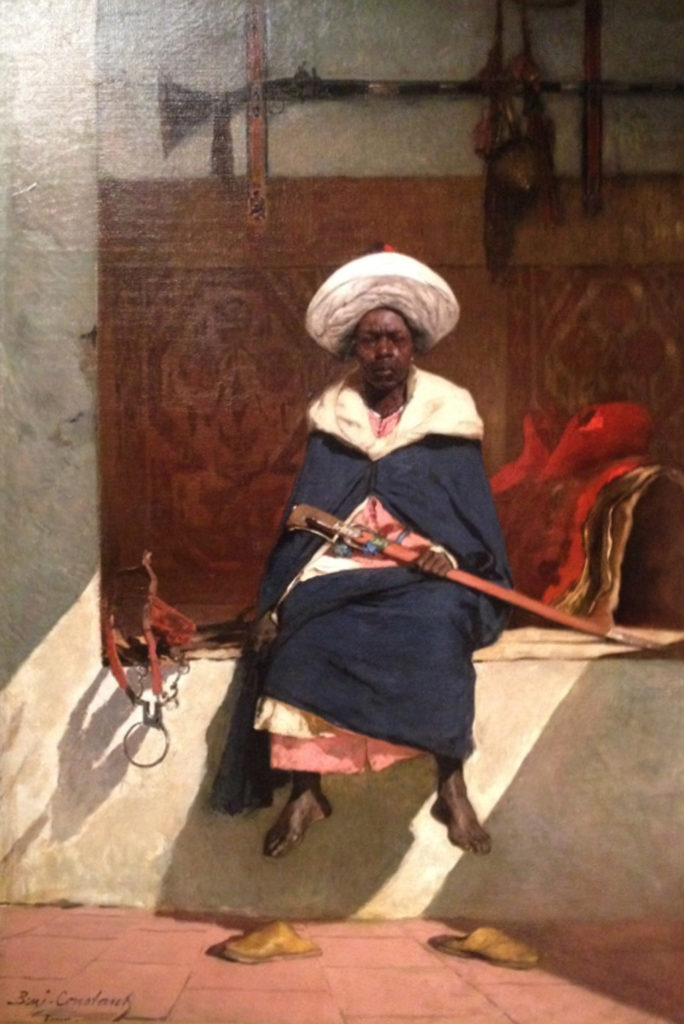
Benjamin-Constant, “The Morrocan Qaid Tahamy”, 1882, Oil on canvas, © photo by Bogra 2019-20
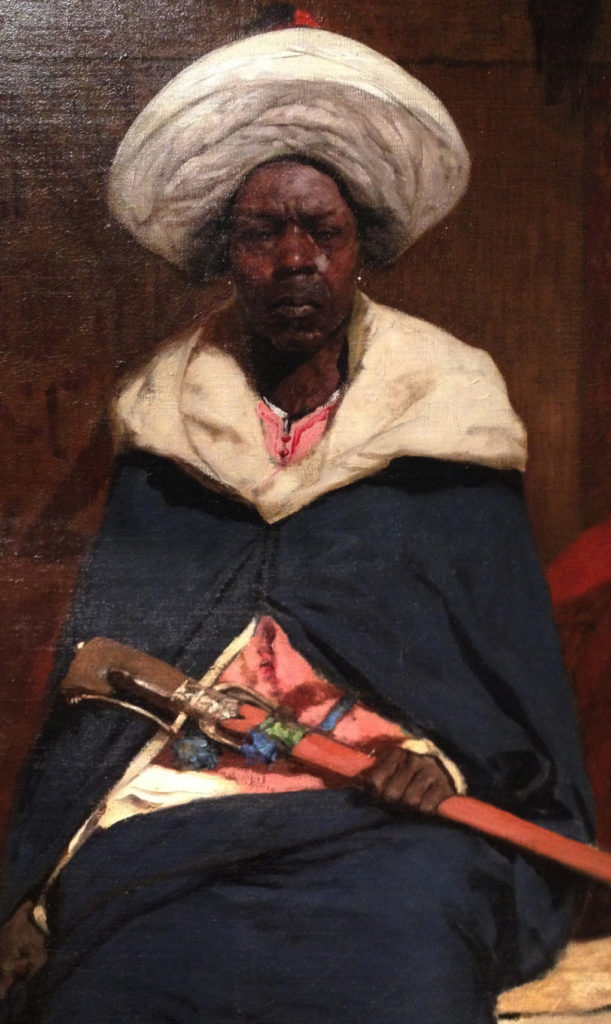
Benjamin-Constant, “The Morrocan Qaid Tahamy”, 1882, Oil on canvas, © photo by Bogra
The settings of this universe – a mixture of real-life and fantasy – were, however, places such as Granada or the Maghreb, which were decidedly un-Oriental but easier to reach.
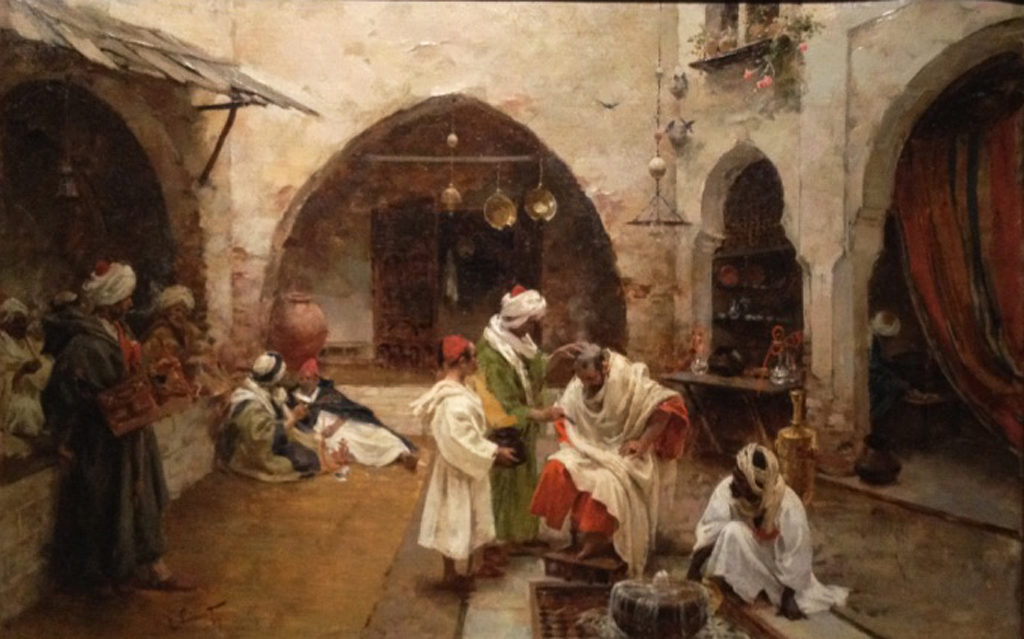
Enrique Simonet, “The Barber of the Zouk”, 1987, Oil on canvas.
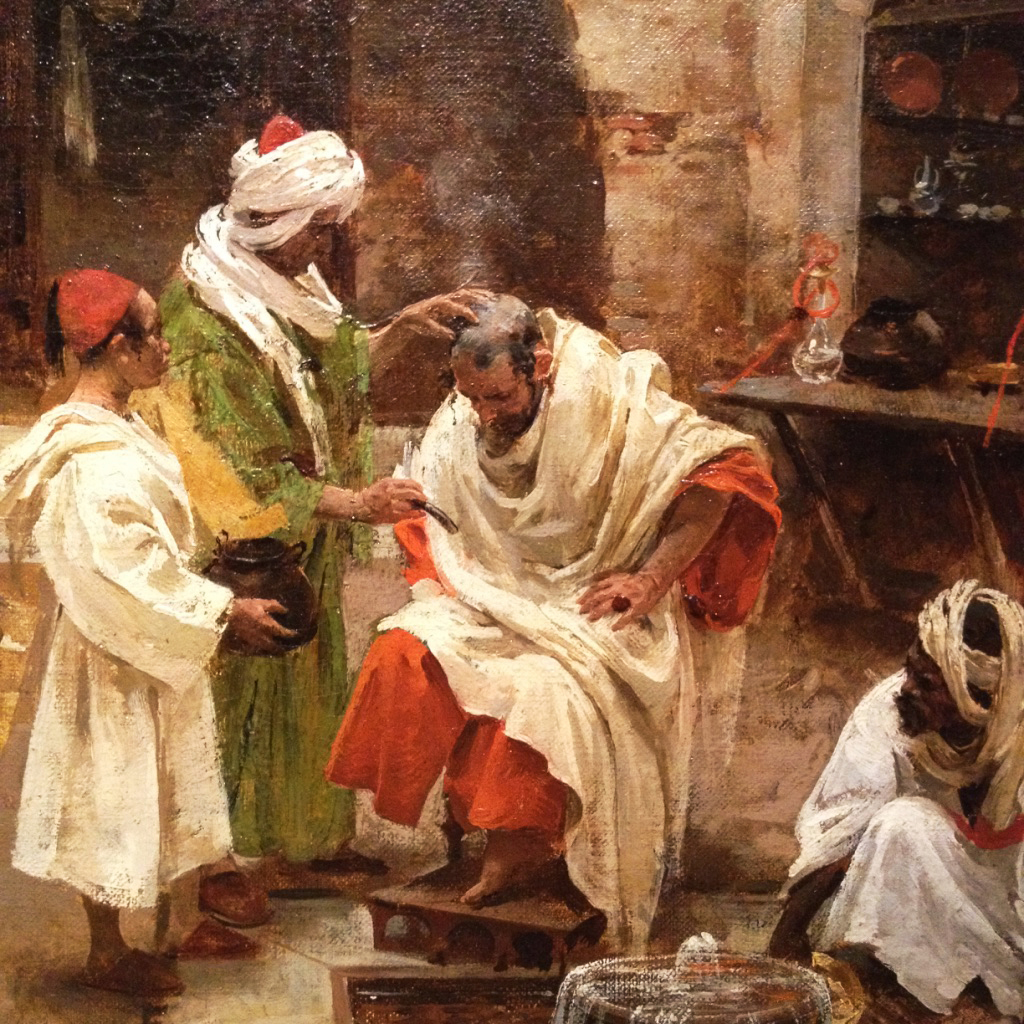
Enrique Simonet, “The Barber of the Zouk” Detail, 1987, Oil on canvas.
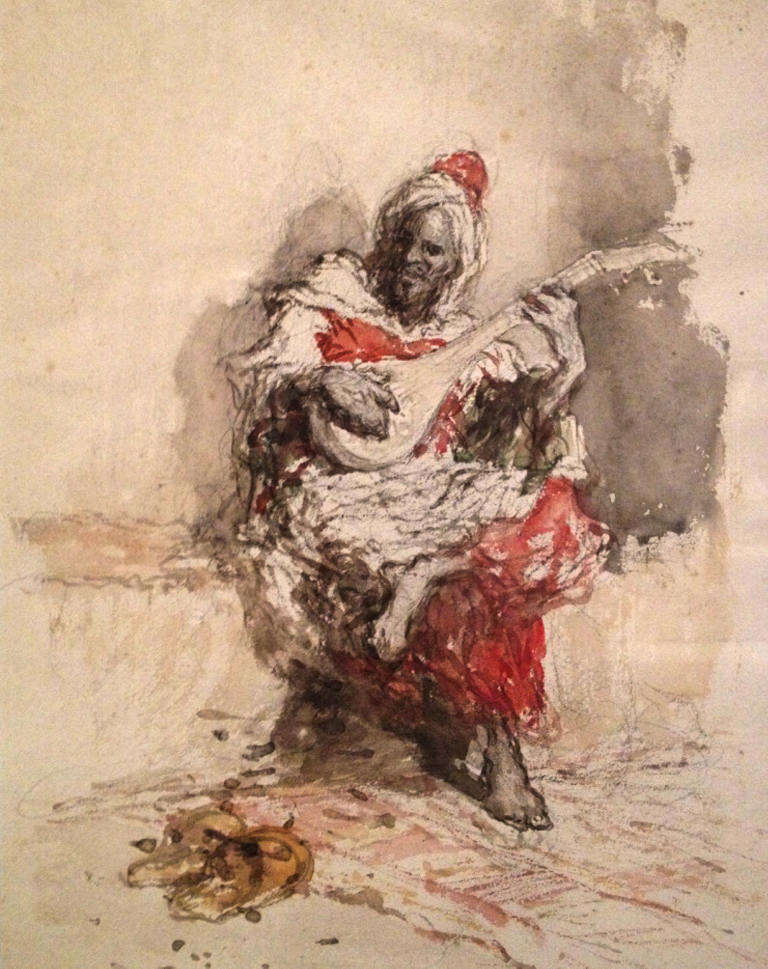
Francisco Lameyer, “Musician” 1870, Watercolor on paper, © photo Bogra art studio 2019-20
This exhibition explores the land, everyday life, and faces of the inhabitants of the destinations for bourgeois westerners´ escapist fantasies, which were reflected in Spanish art of the second half of the 19thcentury by Mariano Fortuny, Francisco Lameyer, Fabrés, Josep Tapiró and many other artists.
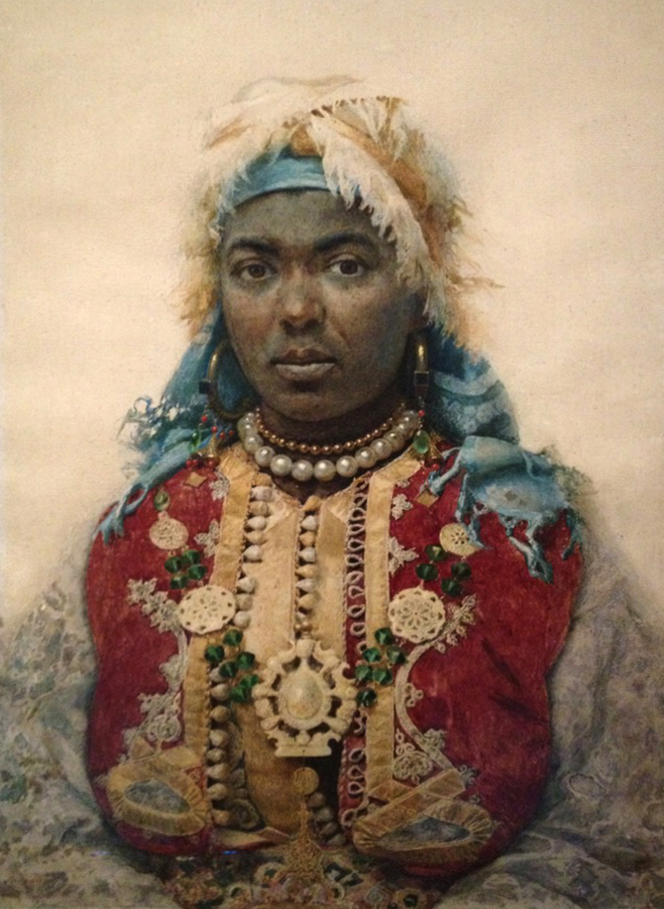
Josep Tapiró, “Bride”, 1890, Watercolor on Paper, © photo by Bogra art studio
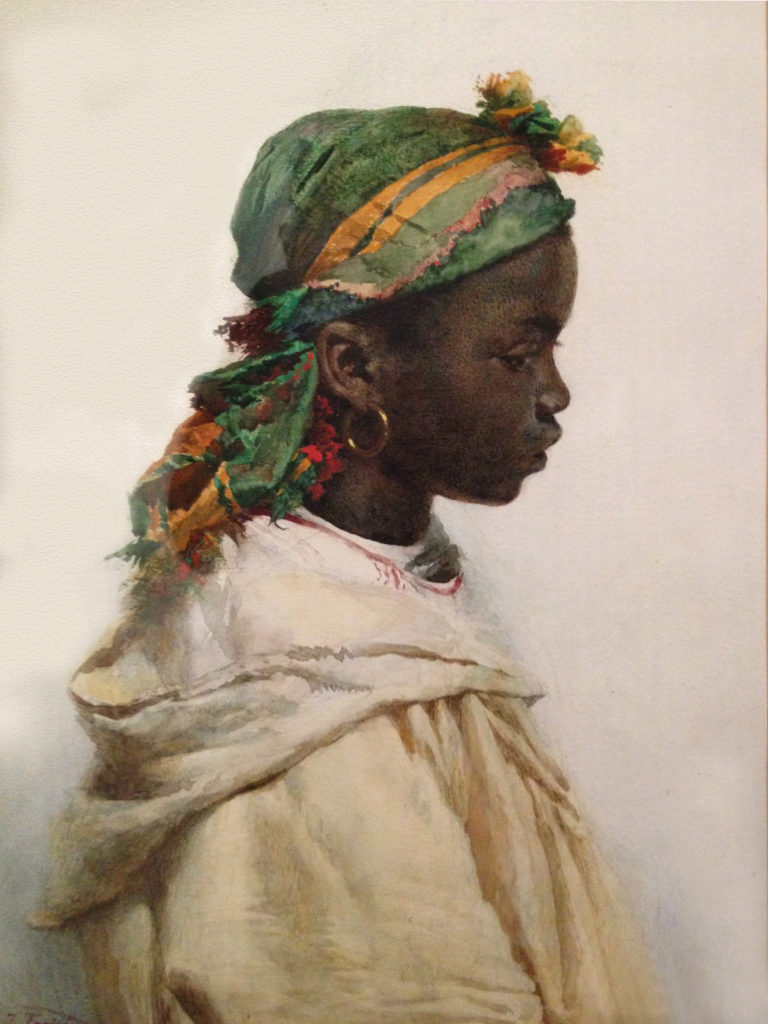
Josep Tapiró, Portrait of girl of Tangier, 1880, Watercolor on paper, © photo by Bogra
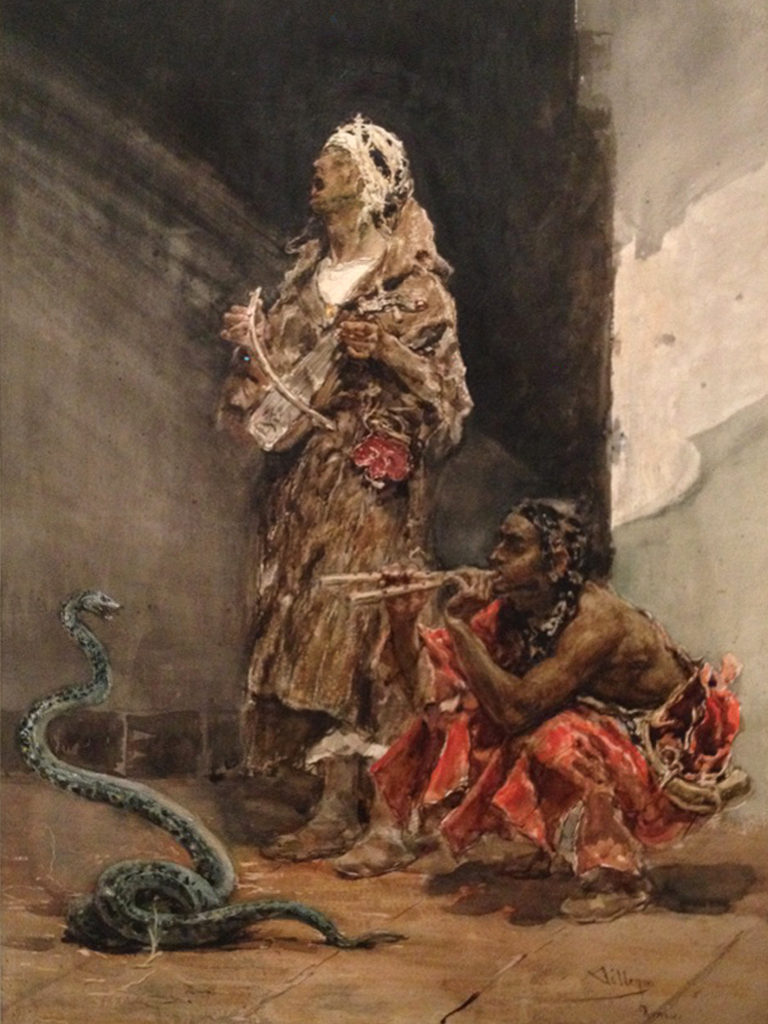
José Villegas, “The snake charmer”, 1878, Watercolor on paper, © photo by Bogra art studio
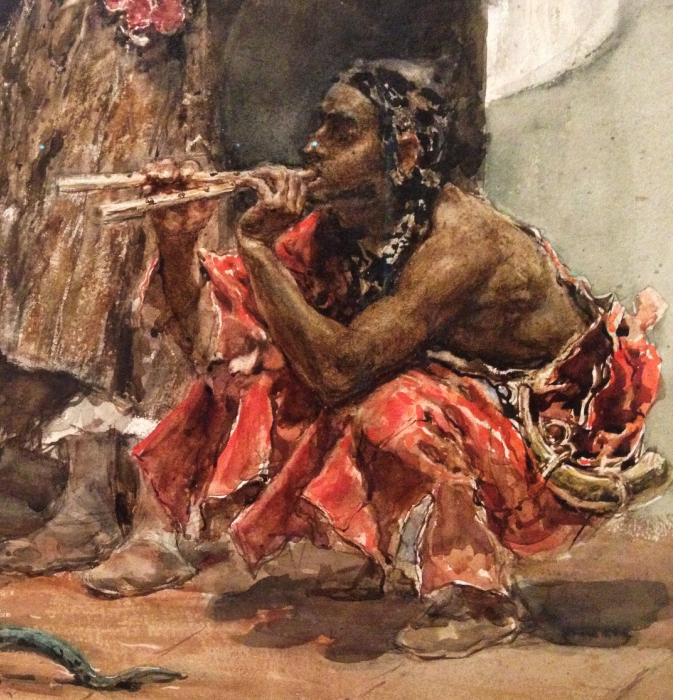
José Villegas, “The snake Charmer” detail, 1878, © photo by Bogra art studio
Their versions of this theme are accompanied by several examples by their contemporaries Delacroix, Benjamin-constant, and Dehondencq, which show the link between the foremost practitioners of this genre in both countries.
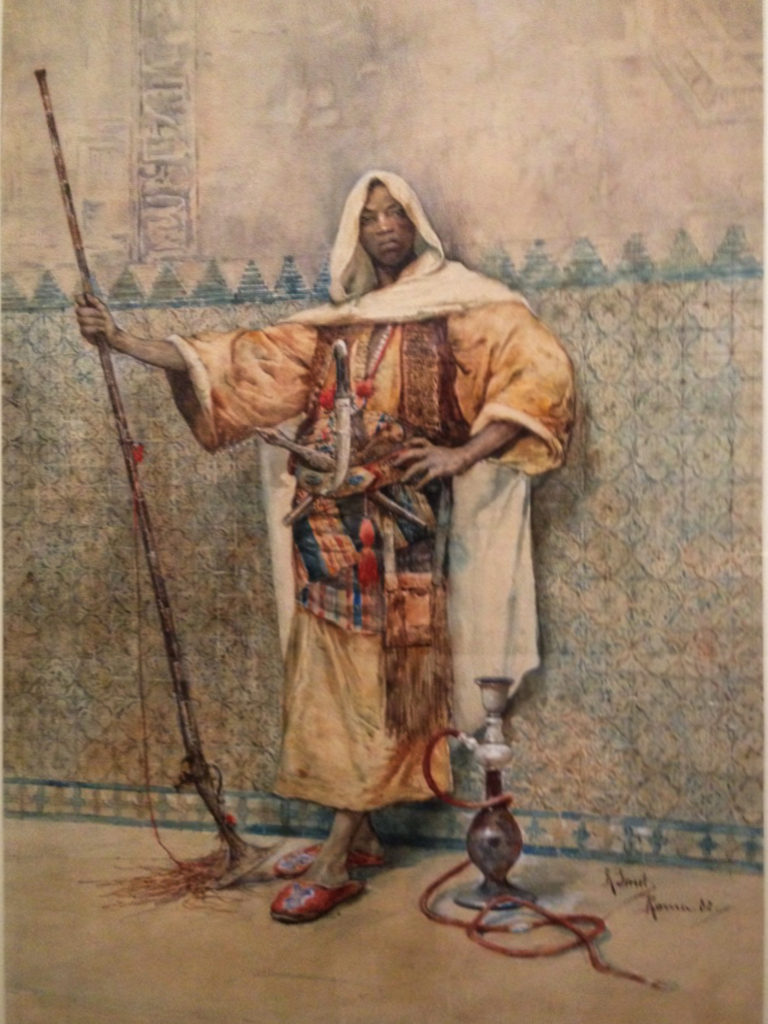
Rafael Senet, “Moor with Musket”, 1882, Watercolor and Gouache, © photo by Bogra
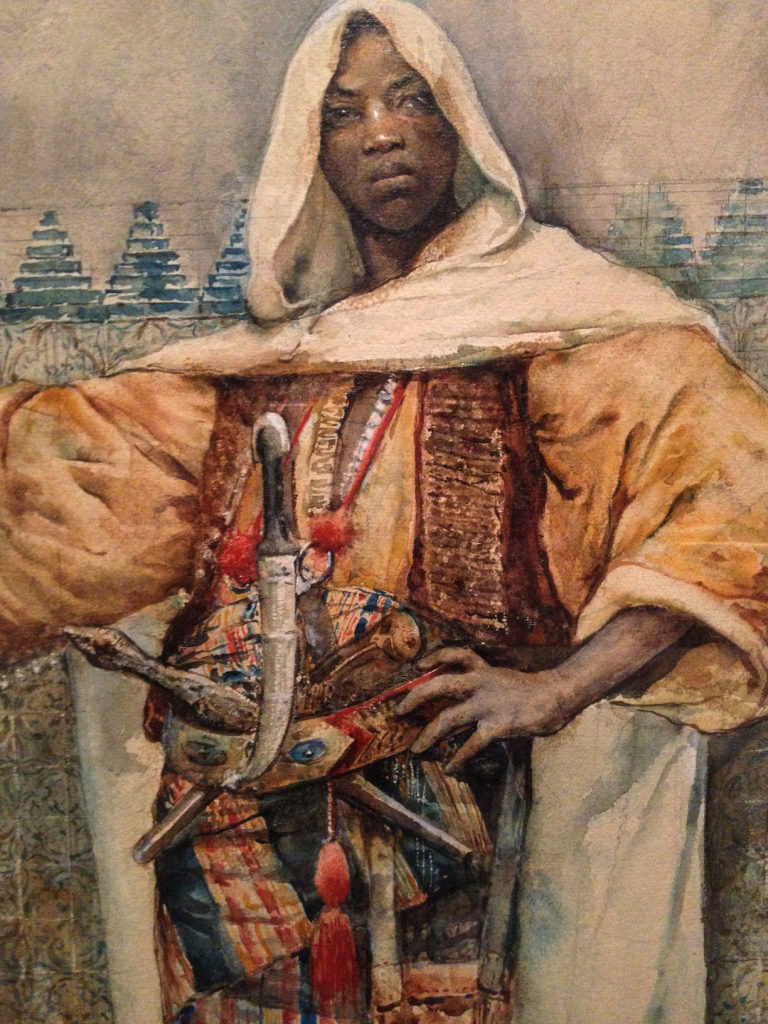
Rafael Senet, “Moor with Musket” detail, 1882, Watercolor and Gouache, © photo by Bogra
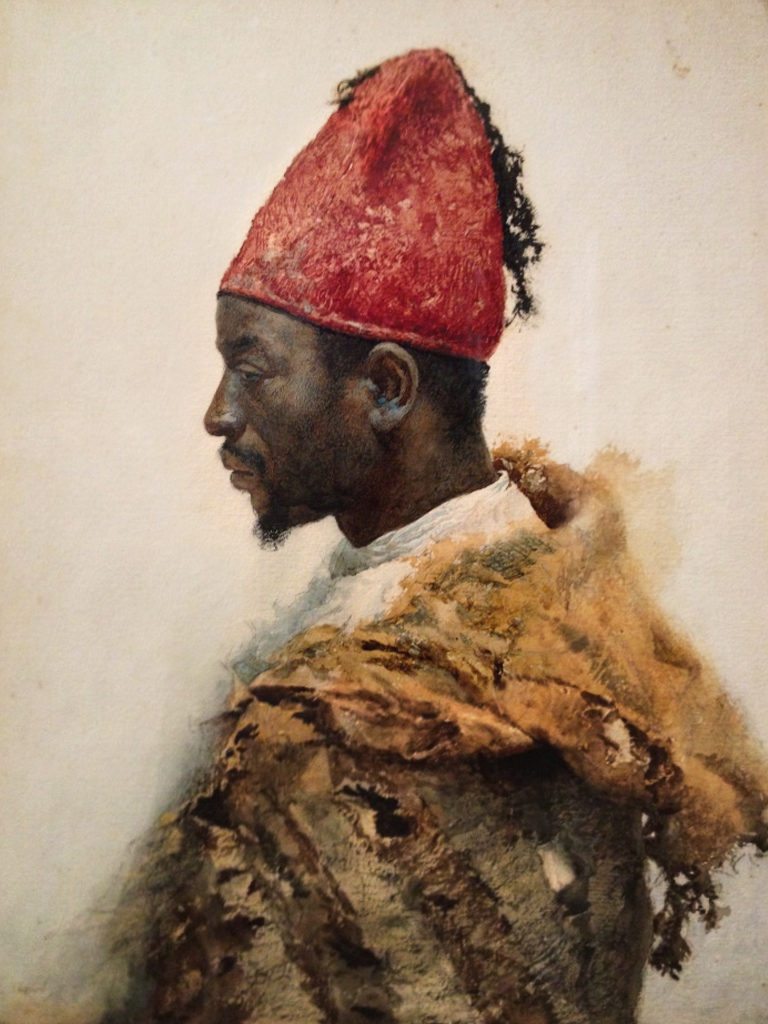
Josep Tapiró “Man of Tangier with red Fez”, 1890-1900, Watercolor © photo by Bogra, 2019

